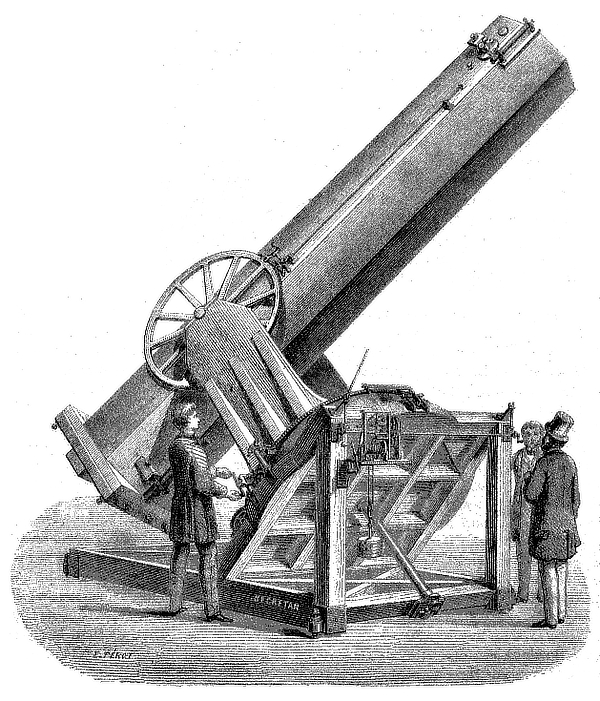NGC 783 in Triangulum
October 2023 - Galaxy of the Month
The GOM this month is going to be a bit of a challenge as it is the faint pair of galaxies around NGC 783 in Triangulum.
NGC 783 and NGC 785 were discovered by Edouard Stephan in October 1869 using the 31” silver on glass reflector designed by Foucault in Marseille. This telescope was mounted outside and uncovered which tells of the normal good weather there (see the list of objects he found with this telescope on Wolfgang Steinicke's website). He described them as eF which suggests they are going to be a challenge for observers.

Barnard later independently rediscovered these objects in the 1890’s but his reported positions were not very good and when he communicated his observations to Dreyer he were thought that Barnard had discovered two new objects and added them to the NGC supplement as IC 1765 and IC 1766. It was later shown however that these objects are the same as NGC 783 and NGC 785. It is worth noting that some software packages still link IC 1766 to the very faint galaxy PGC 7655, which is definitely not the galaxy Barnard saw.
Both NGC 783 and NGC 783 are involved in a group of perhaps 13 galaxies called LGG 42, which contains a further 5 NGC galaxies in NGC 750, NGC 751, NGC 761, NGC 777 and NGC 789. The group lies at a distance of perhaps 73 Mpc (238 million light-years away) and is often known as the NGC 777 group.
NGC 783 is a spiral galaxy with an active nucleus which shows up well in the UV and NGC 783 was subsequently catalogued by Markarian as part of his blue galaxies listings as Mrk 1171. The excess UV light appears to come from a starburst region in the centre of the galaxy, although GALEX observations in the UV suggest that there is a lot of star formation going on in the spiral arms as well. NGC 785 on the other hand is a lenticular galaxy. Although close together on the sky NGC 783 and 785 do not appear to form a physical pair and there are no signs of interactions between them.
The type Ia supernova SN 2004fz was independently discovered in NGC 783 by the UK amateurs Tom Boles and Ron Arbour. It never became very bright however reaching perhaps 15th magnitude at best, not surprising given the distance to the galaxies which is thought to be about 59Mpc for NGC 783, although other measurements give about 73 Mpc, and perhaps 69 Mpc for NGC 785.
The pair is also part of a nice chain of galaxies going from NGC 777 to NGC 789 and NGC 798 (which does not appear to be part of the group). It covers about 50’ on the sky.
As might be expected there are not many visual observations of this pair but the The Night Sky Observer's Guide (NSOG) Vol. 1 suggests that 30-35cm aperture telescopes will be needed to see NGC 783 and perhaps 40-45cm for NGC 785. I suspect from the typical murky UK skies that you will need to use medium to high power to bring the pair out. Luginbuhl and Skiff (L&S) suggest that NGC 783 is faintly visible in 15cm but a 30cm is required to see a very faint smudge of NGC 785. Those observations were made at a high, dry site however.
Owen Brazell - Galaxy Section Director